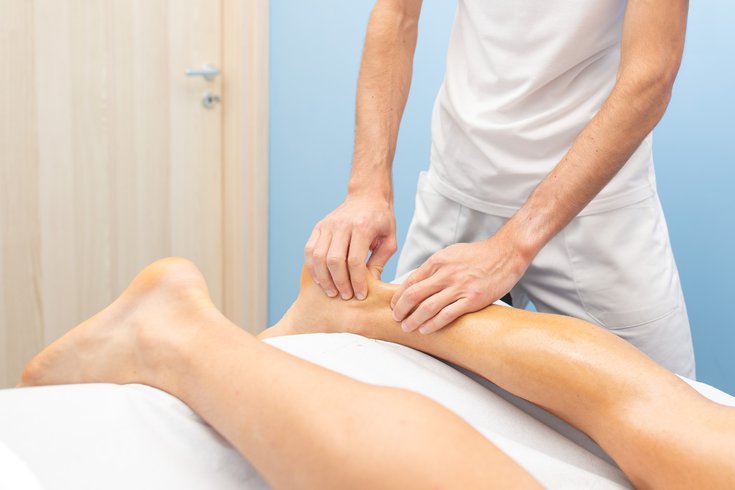
January 18, 2022
 Source/Image licensed from Ingram Image
Source/Image licensed from Ingram Image
Runners, joggers and people wearing poorly fitted shoes are at increased risk for heel pain.
Heel pain is one of the most common reasons that people visit a podiatrist, but the reasons behind the pain are not always easy to determine.
Podiatrists emphasize people who are experiencing heel pain should not ignore it. A medical evaluation is necessary to determine the cause so that the right treatment plan can be prescribed. Most heel conditions improve with nonsurgical treatment, but giving the body time to recover is crucial, experts say.
According to the Cleveland Clinic, more than 2 million Americans experience heel pain every year. Here are some of the most frequent causes:
The most common cause of heel pain is plantar fasciitis, an inflammatory condition of the ligament that supports the foot. It occurs when the ligament on the bottom of the heel is overloaded or overstretched.
If caught early, the condition can be treated with rest, ice, massage, stretching and anti-inflammatories. However, if it is left untreated it can become a chronic condition requiring the use of orthotics to stabilize the foot, according to Dr. Ed Davis, a podiatrist practicing in San Antonio, Texas.
Overpronation – when the foot is rolled excessively inward as a person moves – and oversupination – when it is rolled excessively outward – can lead to chronic plantar fasciitis.
When the ligament breaks down too much, plantar fasciosis – a degenerative condition of the fascia – will develop. More advanced technology is needed in these cases to reduce the thickness and stiffness of the fascia.
Those most at risk for plantar fasciitis include people who are obese or have diabetes, pregnant women, runners, volleyball players, tennis players and people who take step aerobics or stair climbing, according to Harvard Health. People with flat feet also have a higher risk of developing this condition.
Inflammation of the Achilles tendon at the back of the heel is triggered by overuse, especially repetitive jumping in sports and dance. Sometimes, poorly fitting shoes also can be to blame if the back of the shoe digs into the tendon. In rare cases, it can be caused by an inflammatory illness such as arthritis or ankylosing spondylitis.
Treatment for Achilles tendonitis includes rest, icing, anti-inflammatories, and wearing a brace or shoe with a built-up heel. In more extreme conditions, surgery may be needed.
An abnormal growth of bone where the plantar fascia attaches to the heel bone also can be at the root of heel pain.
The bone growth is stimulated by long-term strain on the plantar fascia and the muscles of the foot. People who are obese, runners and joggers are at most risk. Poorly fitted shoes also can trigger the development of a heel spur.
Sometimes people may have heel spurs without experiencing any pain, podiatrists say. Treatments are similar to those of plantar fasciitis and Achilles tendonitis.
Baxter neuritis – the compression of a nerve underneath the fascia – accounts for up to 20% of heel pain, but is often initially misdiagnosed.
Physical examination is usually not enough to identify the clinical features of Baxter neuritis. It can be missed if an ultrasound guided diagnostic test or MRI is performed.
Baxter neuritis often is misdiagnosed as plantar fasciitis, and the treatments for that condition can actually make it worse, experts say.
Risk factors for Baxter neuritis include plantar fasciitis, obesity, flat feet, foot hyperpronation, muscular enlargement and bone spurs. Radiofrequency ablation, which targets the damaged areas of the nerve, can provide long-term pain relief.
Other possible causes of heel pain include stress fractures, bursitis, pump bump and calcaneal apophysitis, which is an irritation of the center of the heel bone in children.
The medical term for pump bump is posterior calcaneal exostosis. It is most common in young women who wear heels. Pressure from the shoes trigger the formation of an abnormal bony growth at the back of the heel.
Bursitis is the inflammation of a bursa – a sac filled with fluid at the back of the heel that cushions the bone, ligaments and muscles.